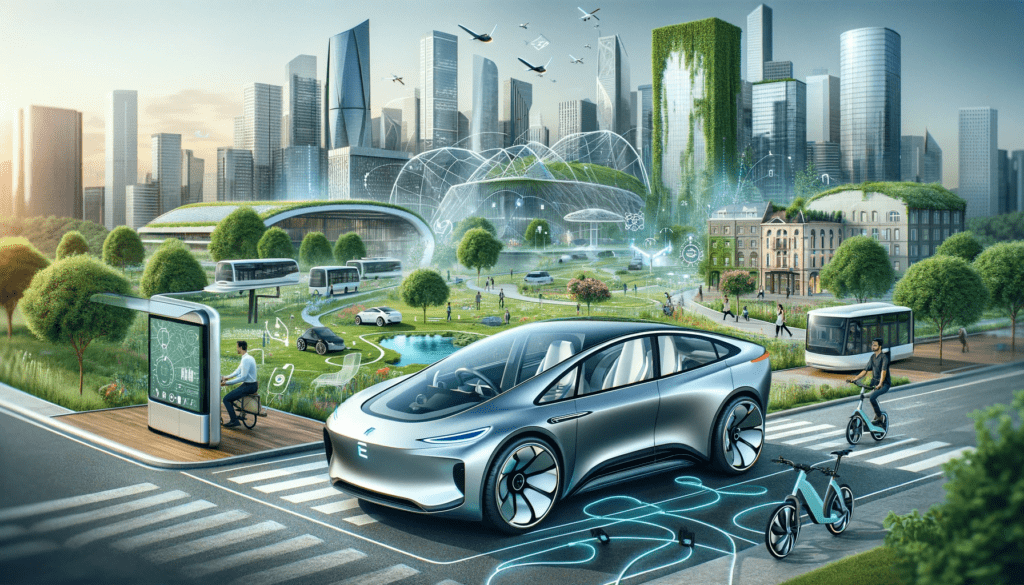The automotive industry is undergoing a significant transformation, with electric vehicles (EVs) at the forefront of this change. Innovations in this sector are about electrification and integrating advanced technologies to enhance performance, safety, and user experience. This article delves into the latest trends in automotive innovations, focusing on electric vehicles, and offers practical advice for consumers considering the switch to EVs.
1. Advancements in Electric Vehicle Technology
- Battery Efficiency and Range: Modern EVs boast improved battery life and longer ranges. Companies like Tesla have been pioneers in this area, offering vehicles that can travel impressive distances on a single charge.
- Charging Infrastructure: The expansion of charging networks is vital. Apps like PlugShare or ChargePoint can help EV users locate nearby charging stations, making long trips more feasible.
- Regenerative Braking: This technology, which recovers energy typically lost during braking, is becoming more sophisticated, further enhancing the efficiency of EVs.
2. Integration of AI and Autonomous Features
- Self-Driving Capabilities: Companies like Waymo and Tesla are pushing the boundaries of autonomous driving. Though fully autonomous vehicles are still being developed, many EVs have advanced driver-assistance systems (ADAS).
- Connectivity and Infotainment: EVs are increasingly becoming connected devices on wheels. They offer advanced infotainment systems and seamless integration with smartphones and smart homes.
3. Environmental Impact and Sustainability
- Reduced Emissions: EVs contribute significantly to reducing carbon emissions. Websites like the U.S. Department of Energy’s Alternative Fuels Data Center provide valuable insights into the environmental benefits of EVs.
- Sustainable Manufacturing: Automakers focus on sustainable practices, from using eco-friendly materials to ensuring that battery production and disposal are environmentally responsible.
4. Economic Considerations and Incentives
- Initial Cost vs. Long-Term Savings: While the upfront cost of EVs can be higher, tax incentives, lower maintenance costs, and savings on fuel can make them economically attractive in the long run.
- Government Incentives: Many governments offer incentives for EV purchases. Websites like DSIRE provide information on incentives and policies supporting renewables and energy efficiency in the U.S.
5. The Future of Electric Vehicles
- Innovations on the Horizon: The future promises more advancements, including solid-state batteries, improved autonomous driving technology, and wireless charging.
- Market Trends and Consumer Adoption: As technology improves and prices decrease, consumer adoption is expected to rise. Analysts predict a significant increase in the EV market share in the coming years.
6. Practical Advice for Potential EV Owners
- Research and Test Drives: Conduct thorough research and take multiple models for test drives before purchasing an EV. Use resources like Edmunds for comprehensive car reviews.
- Consider Your Driving Habits: Evaluate your typical driving range and access to charging stations to determine if an EV suits your lifestyle.
- Home Charging Setup: Investigate the feasibility of installing a home charging station. Companies like ChargePoint offer home installation services.
7. Conclusion
The shift toward electric vehicles is more than a trend; it’s a part of a broader movement toward sustainable and technologically advanced transportation. As battery technology improves, charging infrastructures expand, and government incentives become more prevalent, EVs are set to become a more accessible and practical choice for consumers worldwide.
Additional Resources
- Forbes Article on EV Market Growth: Explore in-depth analyses of the EV market’s growth and future trends.
- Consumer Reports on EV Ownership: Offers practical advice and reviews from real EV owners.
- TechCrunch on Automotive Innovations: Read about the latest technological advancements in the automotive industry, focusing on electric vehicles.

